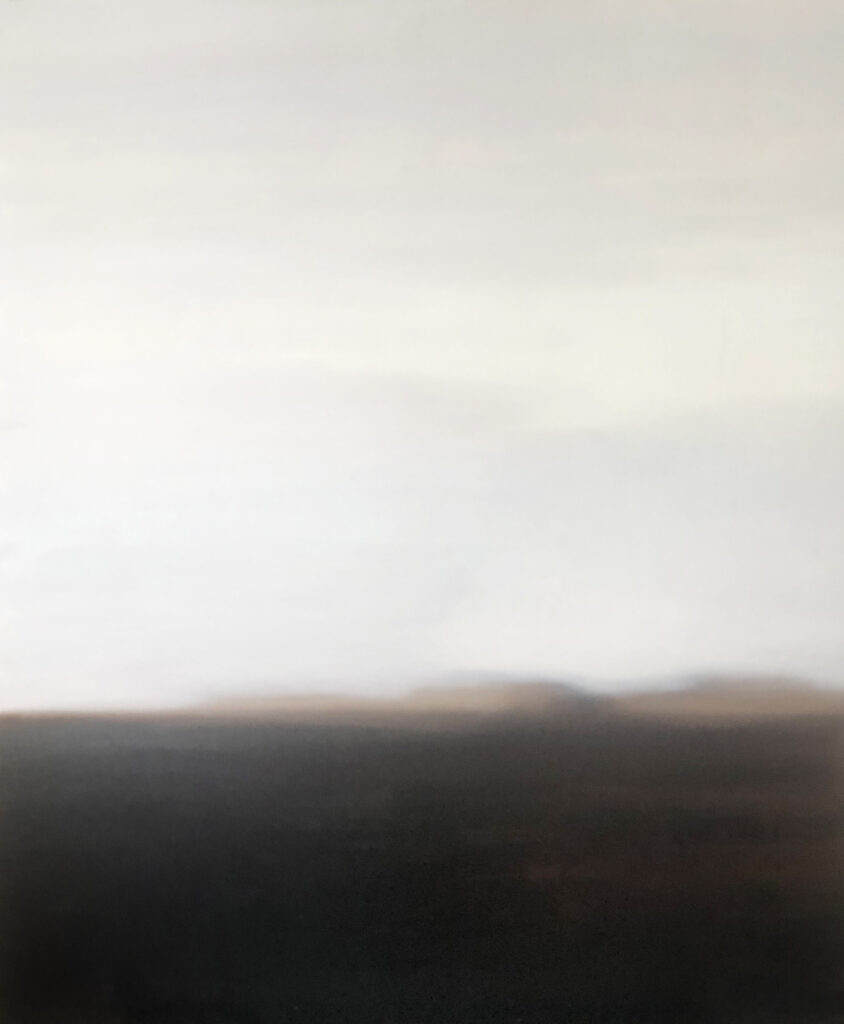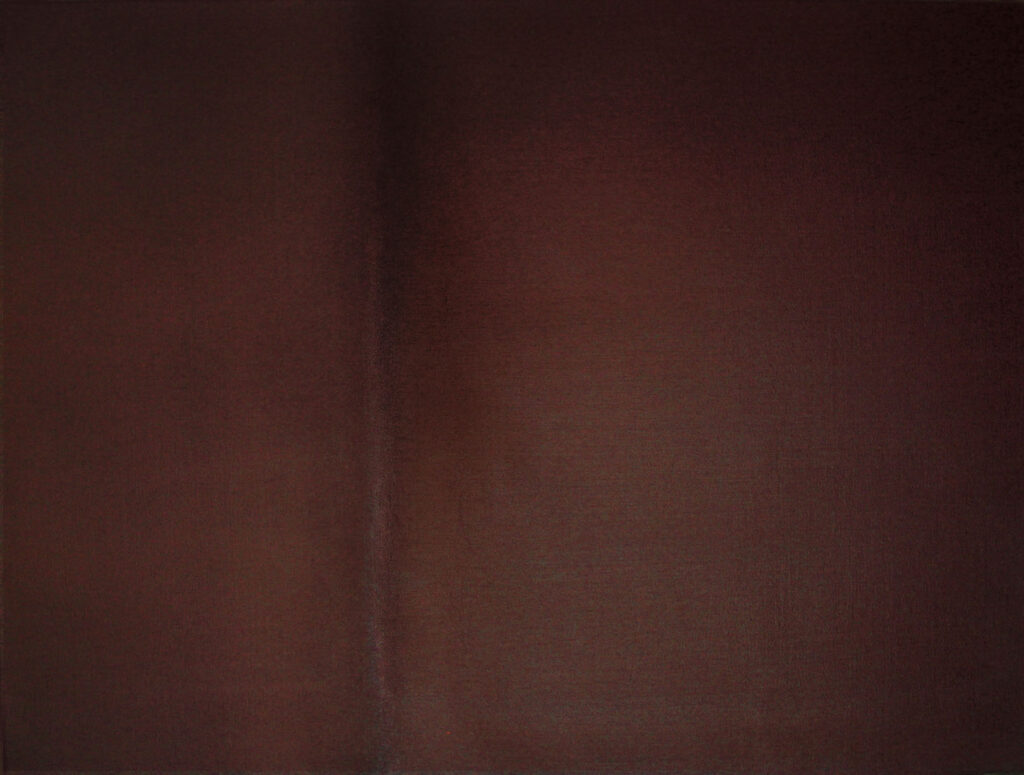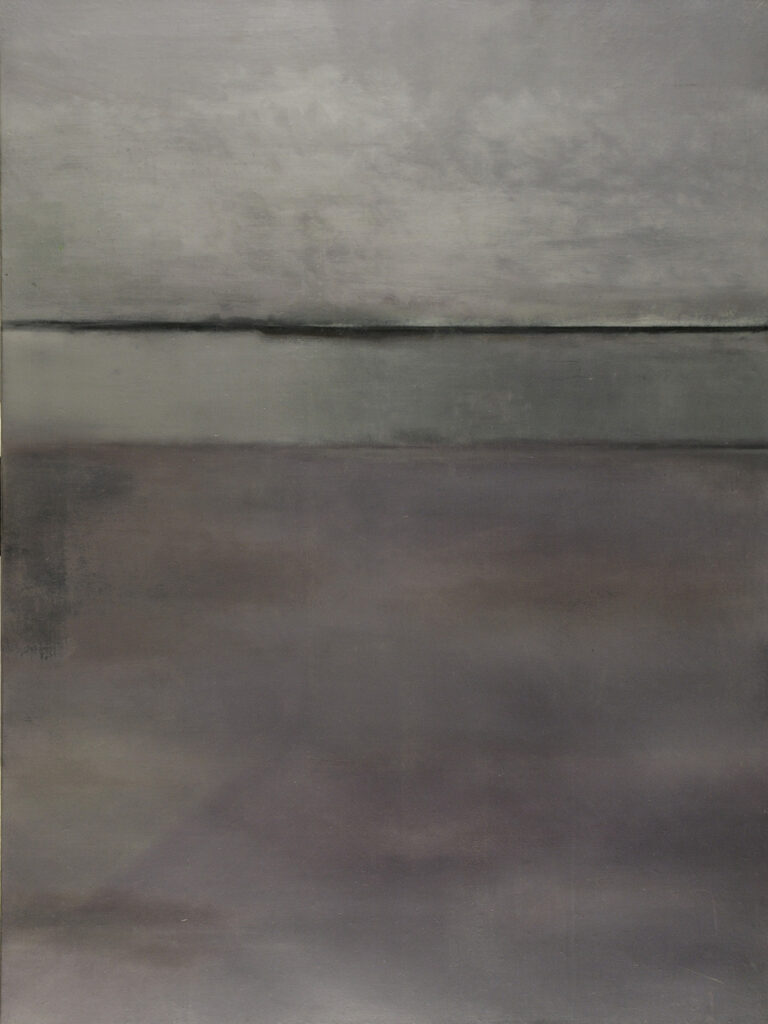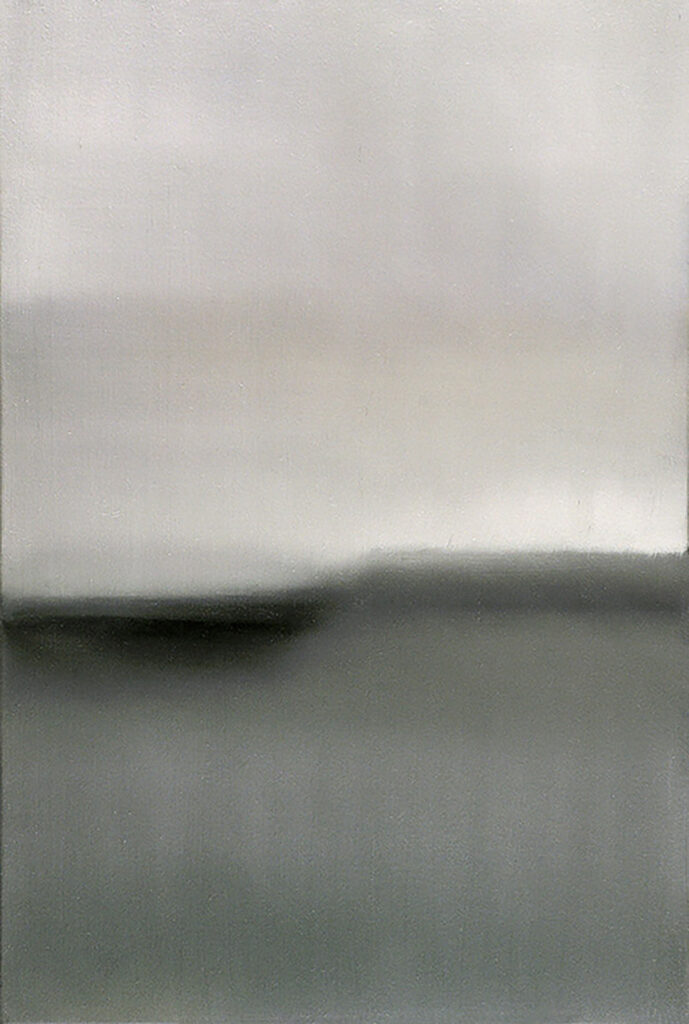Iridescence of the surface
Catherine Cazalé, july 1997
For the catalog of the exhibition “Poids lourds, Cologne-Paris” the Rheinania in Cologne and Galerie EOF, Paris.
By abandoning the large bodies he was painting, Bayetto was certainly asking himself a series of questions like this one: « How to undertake color after the prestigious works of his American elders (Rothko, Newman, Noland)? »
First of all by returning to oils whose dulcite allows both for retouching and for the control of light and forms. Then, by keeping his painting at a distance from any emphatic affectation, from any idea of a particular style. The geometry (stripe, cross) one might see in it is itself a kind of sober piece of information perceptible enough to consider as the point of departure for a phenomenological experiment bearing both on its visual qualities and its intention.
In many ways, Bayetto extends the tradition of a certain ontology of painting, of the analysis of its fields. That said, limiting him to that space would insult his ability to seduce his spectator, even one who is incredibly ignorant of the stakes of modernity. How? Through the mastery of a palette that is both aquatic and metallic and that plays on duality (liquid/solid, light/heavy, I/you).
Some colors are louder than others. This is the case of the blue, green and black that the artist uses like percussion. Grey becomes the echo of these powerful sounds communicated by the oceanic, the vert, and all the blacks of ivory, cork, and dregs… floating on the surface of the painting.
A painter of the surface, Bayetto could cite one of Valéry’s maxims: is the skin what is deepest?
Translated by Will Bishop






